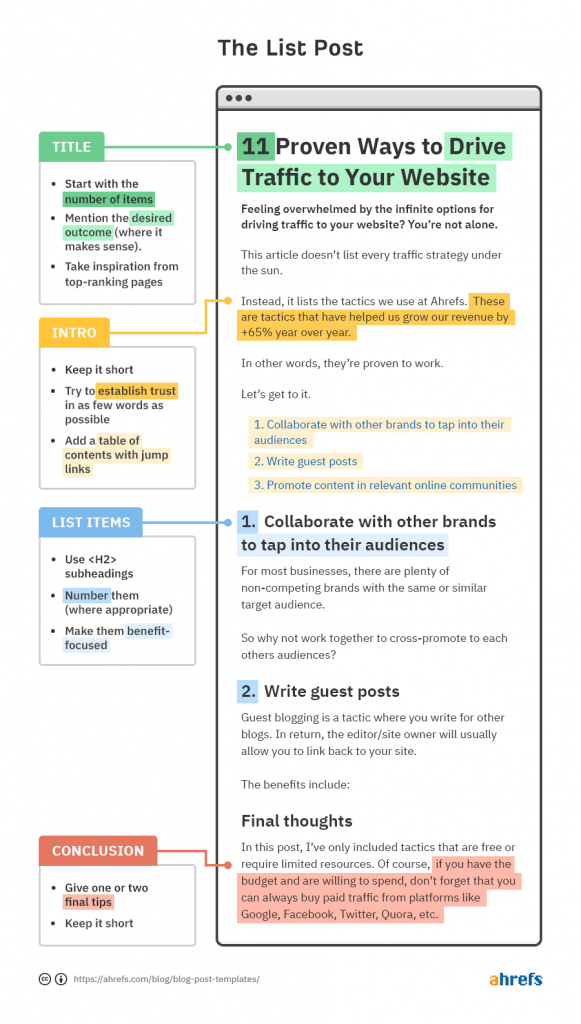If writer’s block has gotten the better of you and you’re sick of staring at a blank page, blog post templates might be the solution.
Every blog post is different, but most aren’t that different.
Think about the blog posts you’ve read. Chances are they weren’t a million miles apart in terms of format. You probably just didn’t pay much attention because you were focused on the content.
For bloggers, this is good news. It means that no matter what you’re writing about, templates can make life easier.
In this post, we’ll cover four blog post templates to help you write great content faster, and when to use them.
- The List Post
- The Step-By-Step Guide
- The Expanded Definition
- The Beginner’s Guide
List posts, also known as listicles, are lists of tips, tools, techniques, myths, mistakes—anything that makes sense as a list.
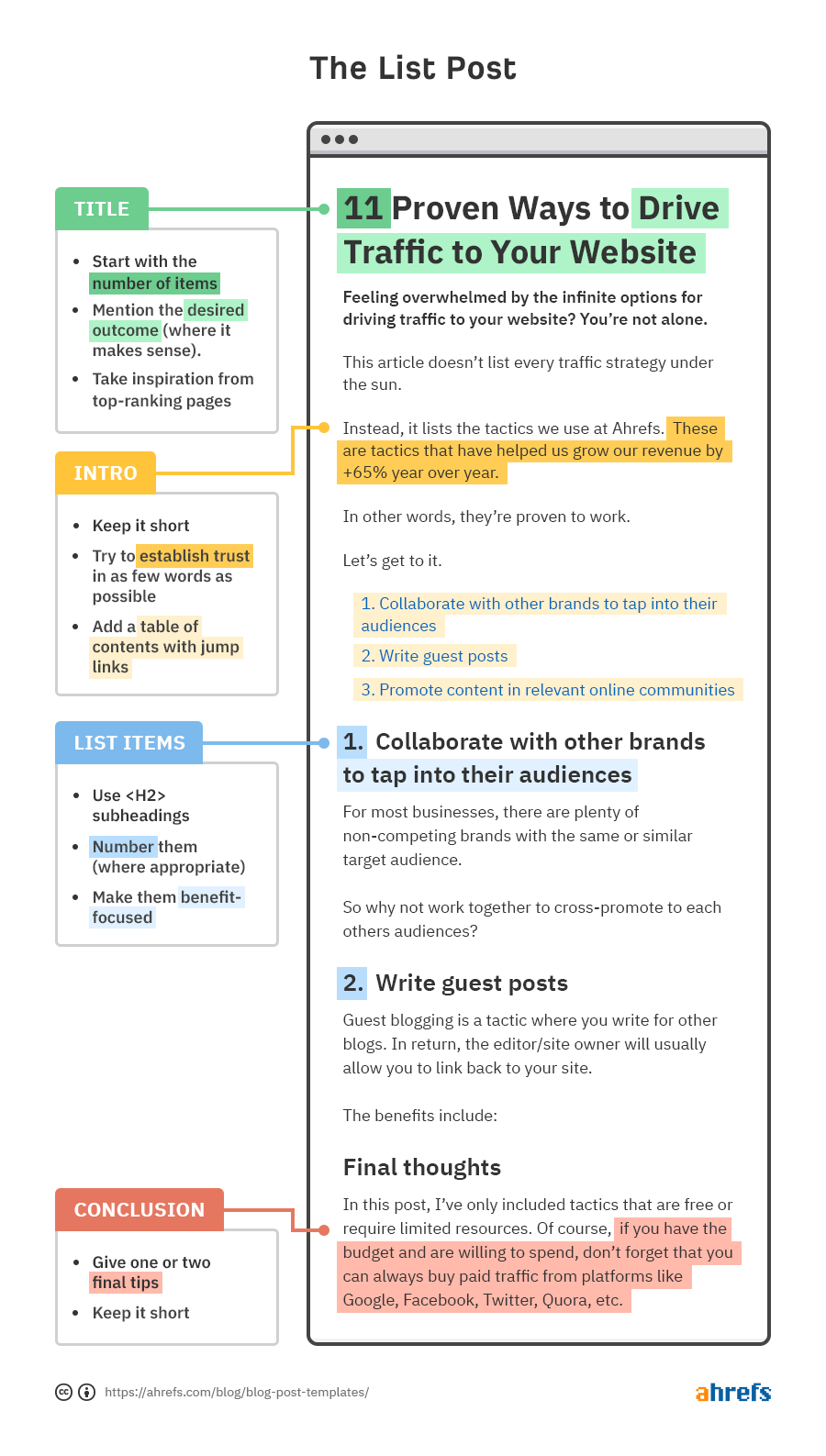
Examples
What kind of content is this template best for?
List posts are best for non-chronological information. In other words, anything that doesn’t need to be in a specific order.
For example, take a look at our list of ways to find someone’s email address:
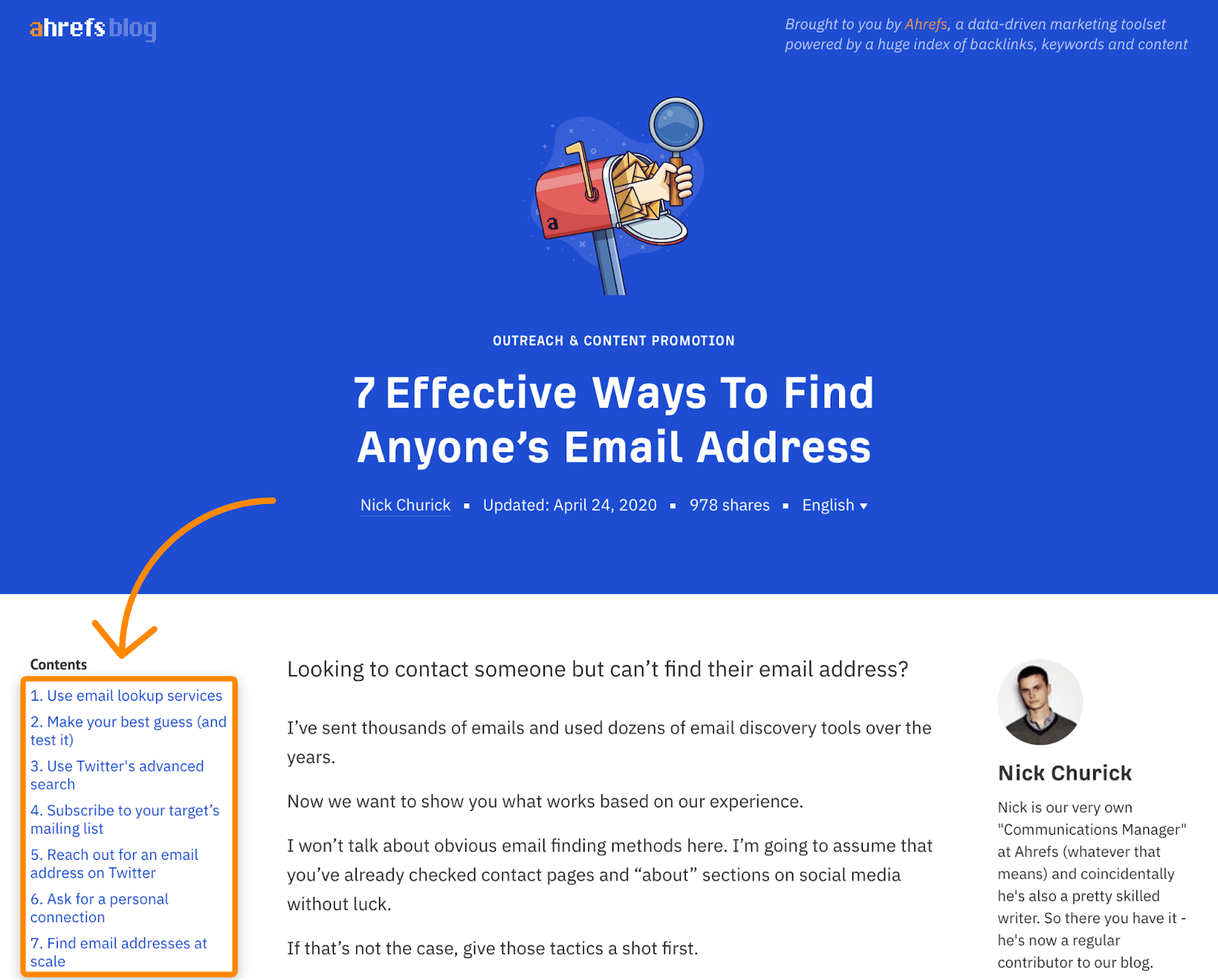
You could rearrange any of these items on the list and the post would still make sense. If that’s not the case for what you want to share, then this isn’t the right template to use.
How to use this template
Follow the steps below.
1. Create a numbered title
Use one of these templates and fill in the blanks.
- XX Ways to [Desired Outcome]
- XX [Topic] Tips
- XX [Type] Tools
- XX Reasons Why [Problem]
- XX [Topic] Techniques
- XX [Products] For [Audience]
Just make sure it’s readable and aligns with the content that you’ll be sharing in your blog post. If your post is about weight loss tips, don’t call it “13 Reasons Why You’re Not Losing Weight.”
Beyond that, feel free to make your title more compelling by adding a benefit or including relevant power words. For example:
10 Ways to Get More YouTube Views
→
10 Easy Ways to Get More YouTube Views (Even If You Have Zero Subscribers)
If you’re struggling, look to the titles of the top-ranking pages for inspiration.
Recommended reading: How to Craft the Perfect SEO Title Tag (Our 4‑Step Process)
2. Write a short intro
Most people skim list posts. That’s the beauty of this format; it’s non-chronological. If one of the tips on the list doesn’t appeal, the reader can keep scrolling until they see one that piques their interest.
For that reason, there’s no point in writing a long introduction. You just want to do two things:
- Establish trust in as few words as possible.
- Include a linked table of contents.
Here’s a good example of establishing trust from our blog:
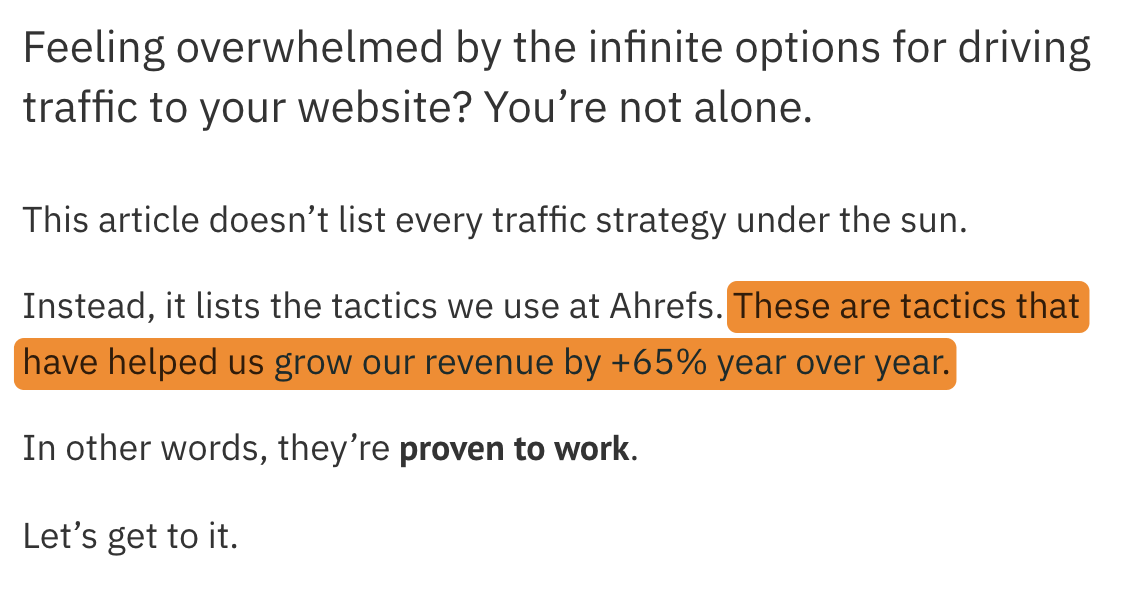
Adding jump links below this just makes life easier for the reader. They don’t have to scroll through the entire list to understand what they’ll learn. They can just skim the contents and jump straight to the tip that interests them.

Learn how to add jump links in this post.
3. Use subheadings for list items
Every list item needs a subheading. Use the
heading level for each one.
Usually, these will be numbered, but they don’t have to be.
For instance, in our list of Google ranking factors, we chose not to use numbers because all the points are of equal importance.
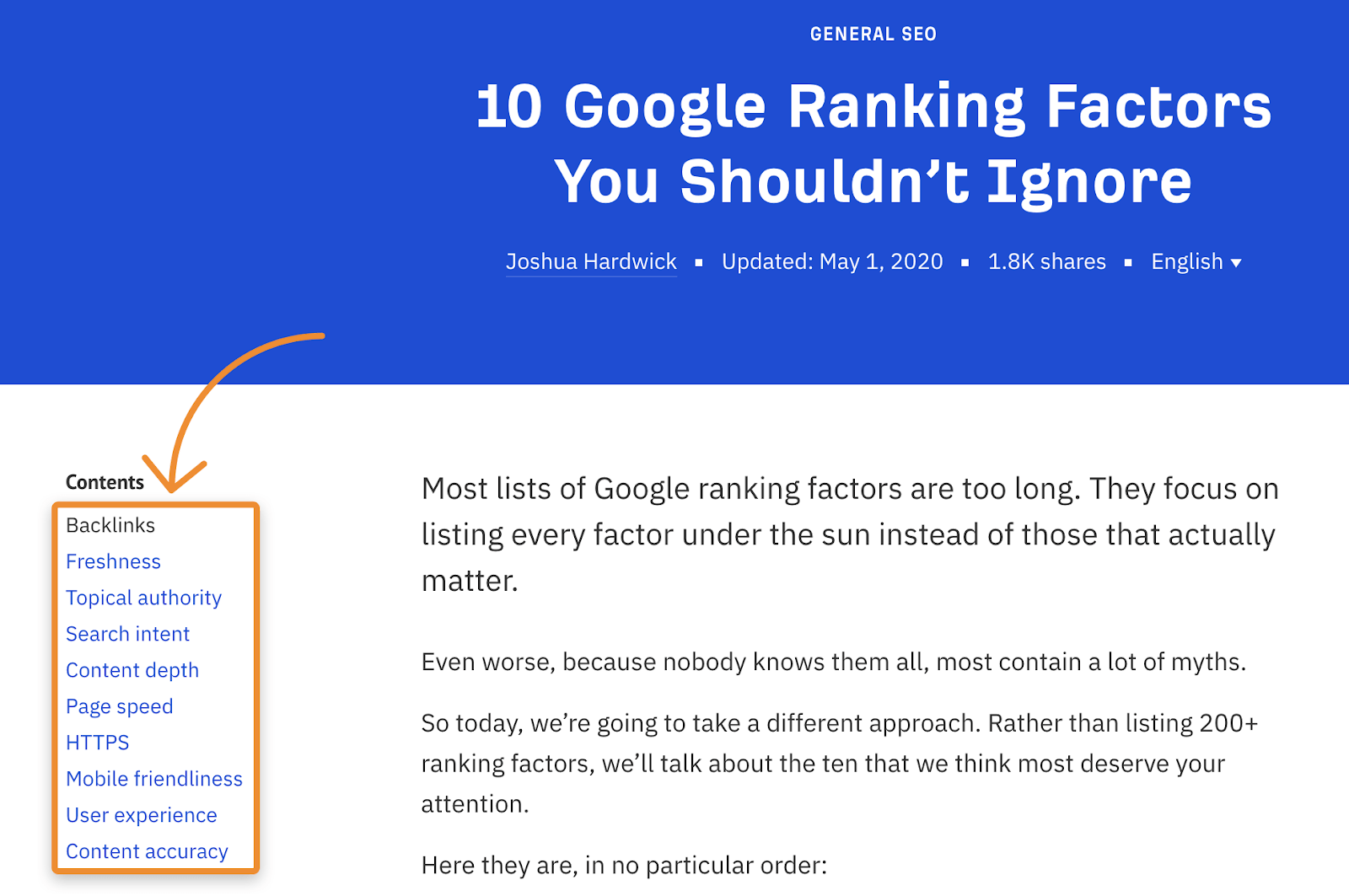
Just make sure the subheadings are descriptive and benefit-focused where possible. This will entice folks to read each point. For example, in a list of weight loss tips, “5. Eat spicy foods to boost your body’s calorie-burning abilities” is probably better than simply “5. Eat spicy foods.”
If you’re not sure what points to include on your list, skim the subheadings in other top-ranking posts for inspiration.
You can use the on-page report in Ahrefs’ SEO toolbar to see these at a glance.

Sidenote.
The on-page SEO report is a free feature. You can use it even if you’re not an Ahrefs customer.
4. Conclude with a final tip
Every blog post deserves a conclusion. There are lots of ways to do this, but one approach that works well for list posts is to give one or two final tips.
Here’s an example from our list of ways to get more views on YouTube:
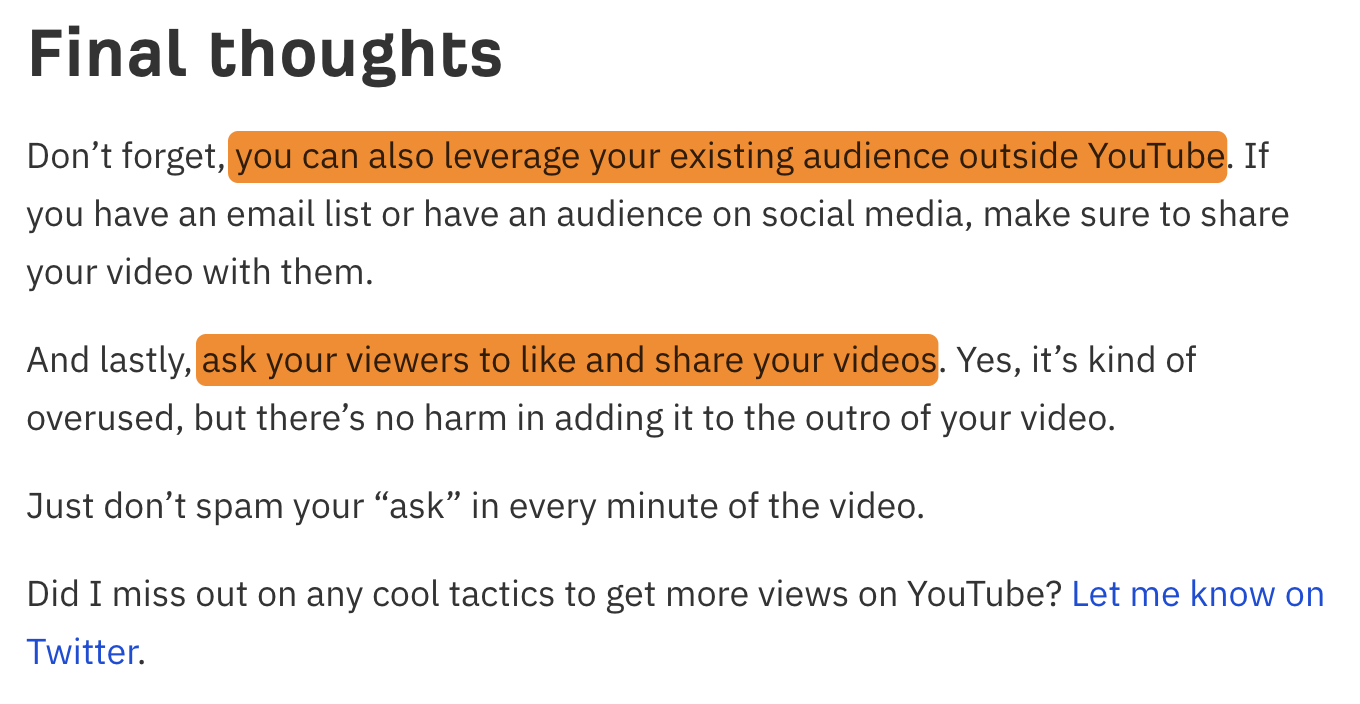
A step-by-step guide runs through a series of chronological steps to achieve an end goal.
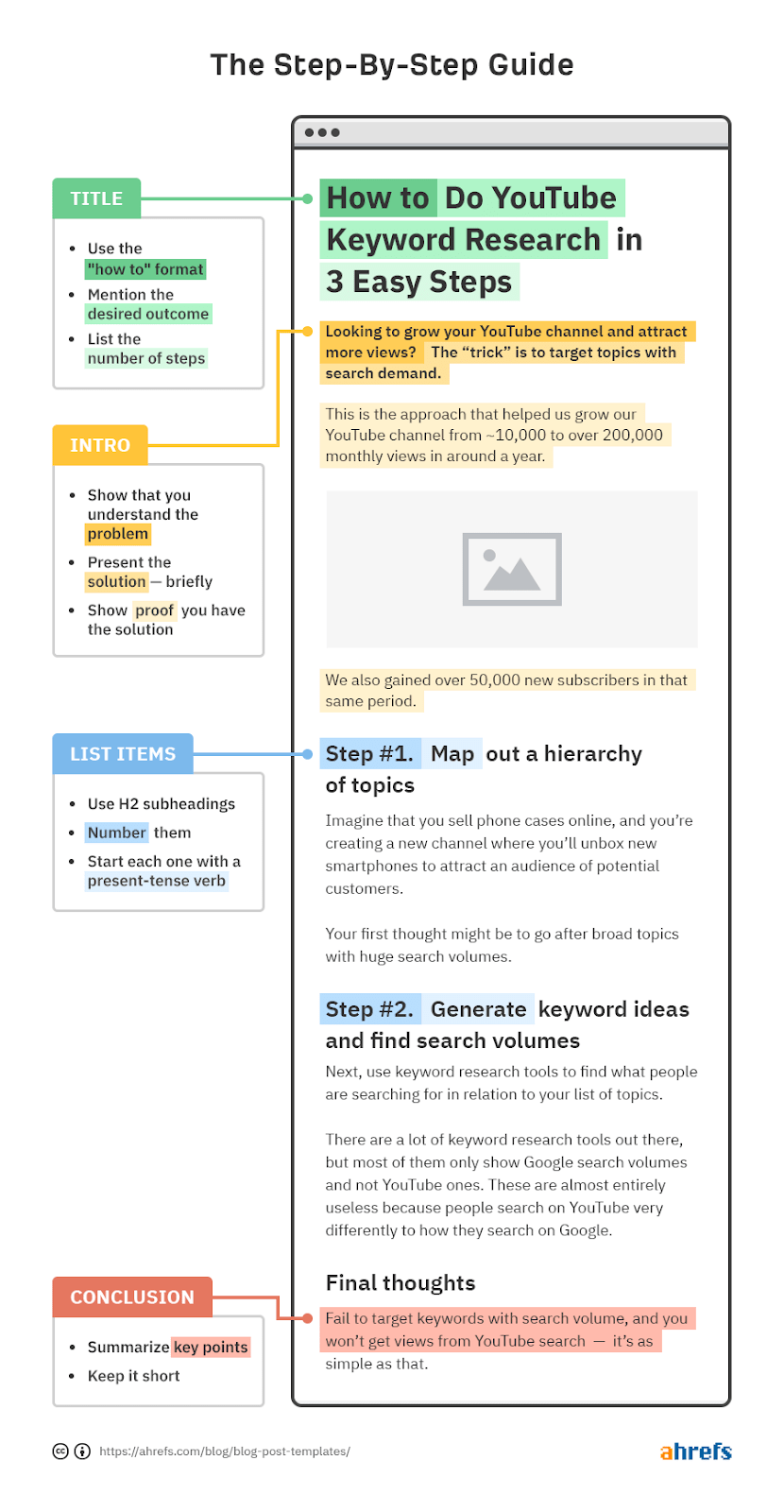
Examples
What kind of content is this template best for?
If you’re teaching people how to do something, and that process needs to be done in a specific order, then a step-by-step guide is the solution.
For example, take a look at our guide to writing a blog post:
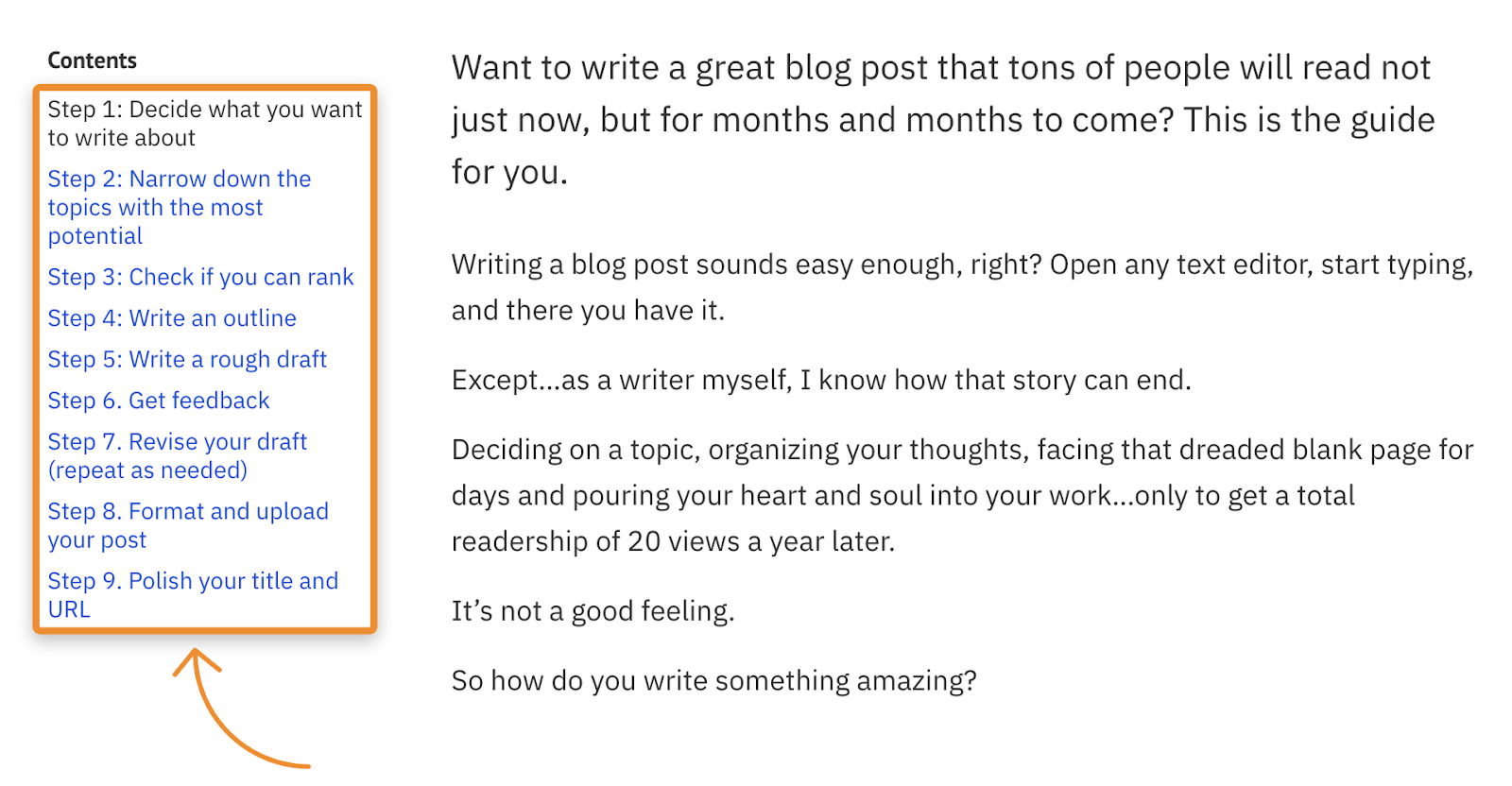
Each of these steps has to be done in order. You wouldn’t write a draft before you write an outline, and you wouldn’t write an outline before choosing a topic. That’s the key difference between step-by-step guides and list posts.
How to use this template
Follow these steps.
1. Create a “how-to” title
Every step-by-step guide has roughly the same title format: How to [Achieve Desired Outcome]
However, it doesn’t have to be that boring. There are variations.
Here are just a few:
- How to [Achieve Desired Outcome] (XX Steps)
- How to [Achieve Desired Outcome] (Even If [Common Obstruction])
- How to [Achieve Desired Outcome] (Additional Benefit)
2. Write a short trustworthy intro (PSP Formula)
If you’re teaching people how to do something, they’ll want to know why they should trust you. There are lots of ways to do this, but one we often use is the PSP formula.
- Problem: Show that you understand the issue at hand.
- Solution: Present the solution—briefly.
- Proof: Demonstrate your experience and success in solving the problem.
Here’s an example of the PSP formula in action:
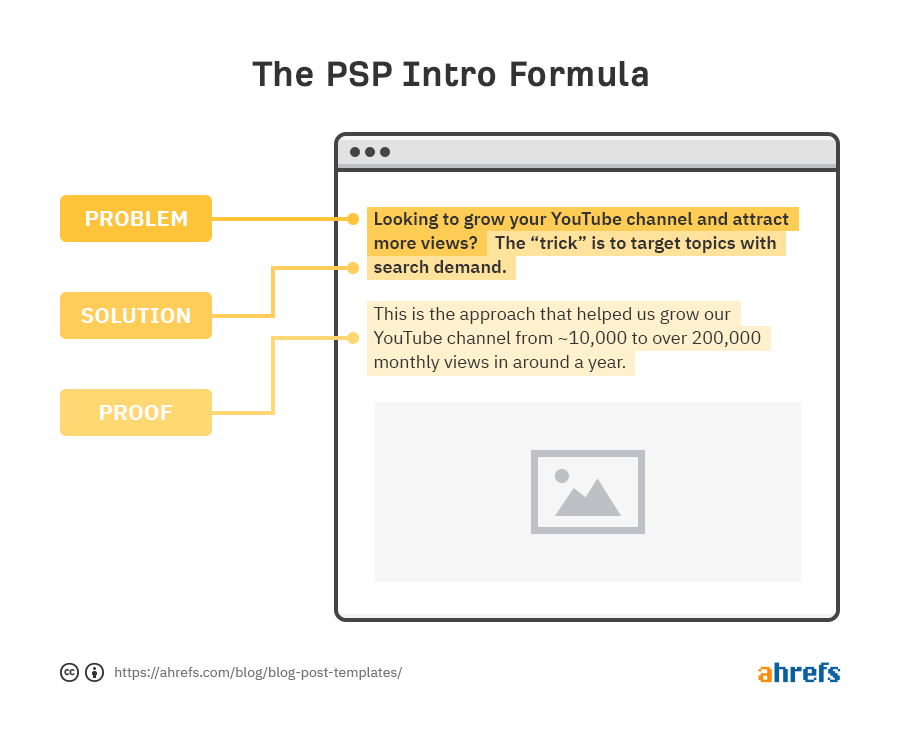
3. Use numbered steps for subheadings
Use H2s to break the process down into steps. Then explain that part of the process in more detail under each subheading.
For example, here are the H2’s from our guide to YouTube keyword research:
- Step 1: Find keywords that perform okay, but not great
- Step 2. Choose a keyword that you want to rank higher for
- Step 3. Figure out why you’re being outranked
- Step 4. Beat the other pages where it matters
- Step 5. Track rankings
- Step 6. Rinse and repeat for other keywords
Where possible, start each step with a present tense verb.
4. Conclude with a quick summary
Don’t overthink this. Just summarize the process you taught people in the post.
Expanded definitions explain the meaning of a thing or concept, before going into more detail about it.
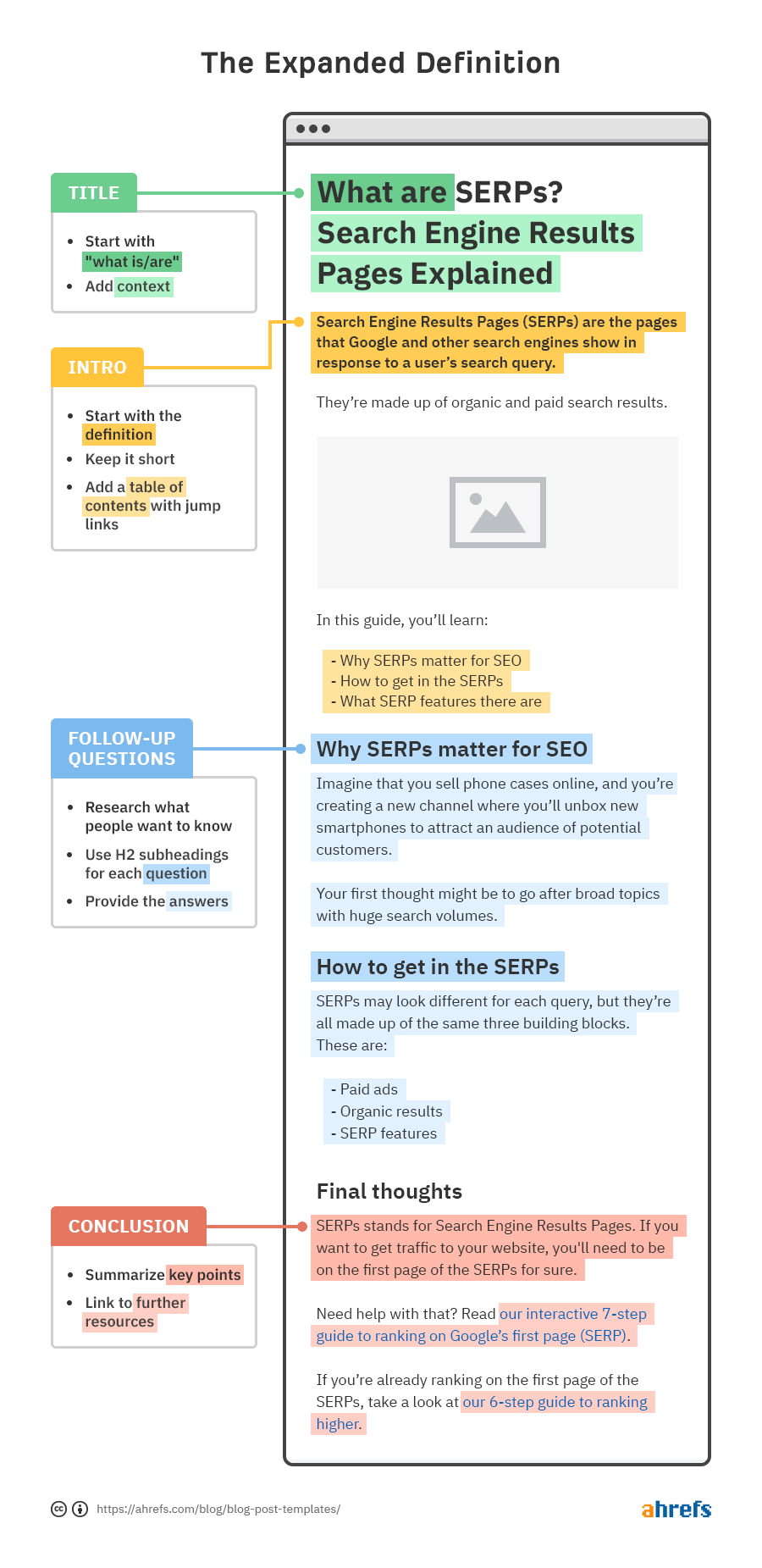
Examples
What kind of content is this template best for?
If readers will find it hard to follow the ins and outs of your post without first understanding a thing or concept, then this is probably the best format.
For example, take our post about SERPs. It goes into detail about why SERPs are important, how to get in the SERPs, and SERP features. However, because SERP is an acronym, most readers will be completely lost unless we first define that term. So we did that in the first sentence:

How to use this template
Follow these four steps.
1. Start your title with “what”
Use the “what is” or “what are” format for your title.
Feel free to add context and make your title less dull with one of these formats:
- What is [Concept]? Everything You Need to Know
- What is [Acronym]? [Expanded Acronym] Explained
- What is [Concept]? A [Brief/Quick/Detailed] Introduction
2. Define the term in the intro
Don’t beat around the bush with a long introduction. Start with the definition.
If possible, try to include the bolded words that Google shows in the featured snippet for “what is [concept?]”.
For example, take a look at the featured snippet for “what is guest blogging”:
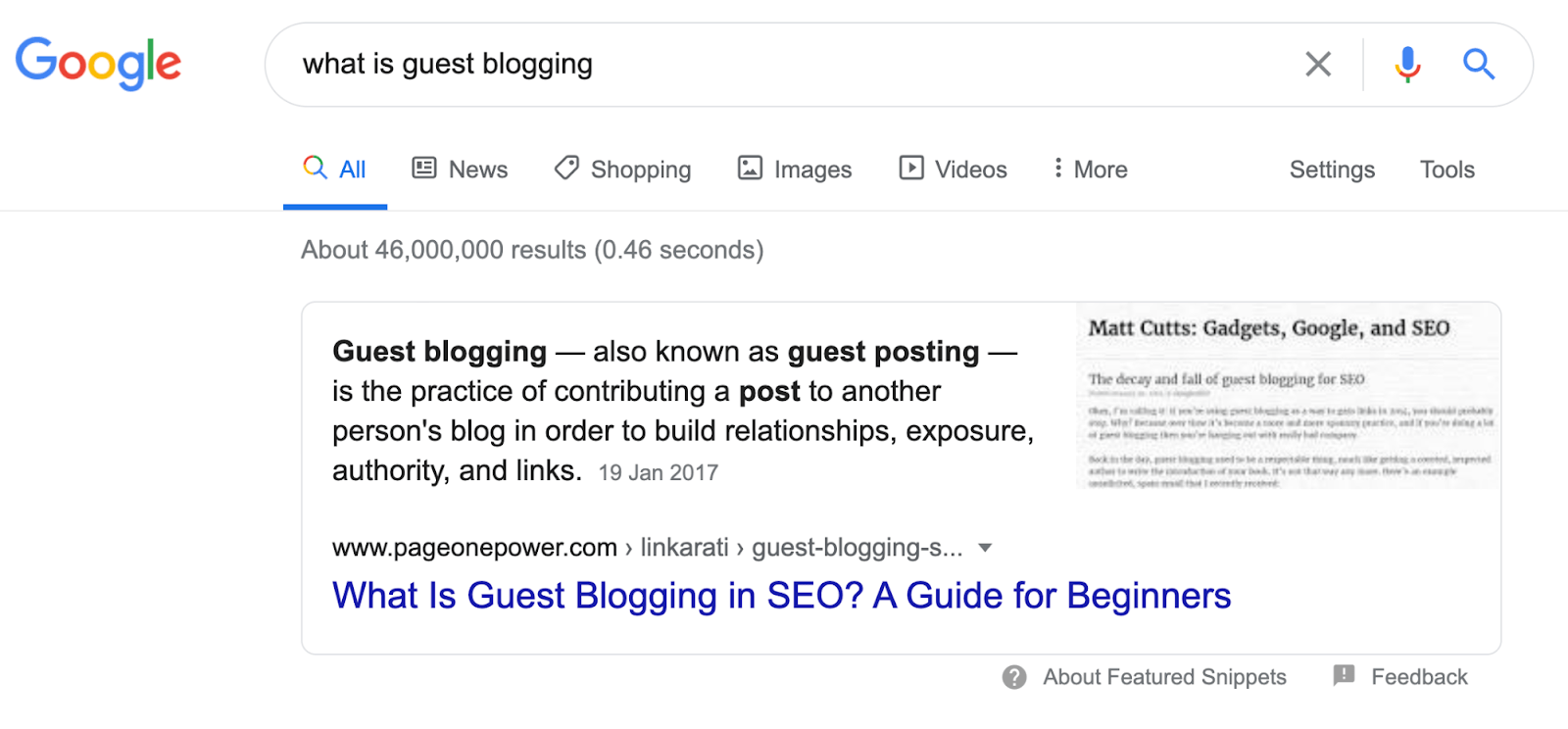
If we were writing an expanded definition post about this topic, we’d want to include “post” and “guest posting” in our definition because they’re bolded in the current snippet. Just don’t force these if it feels unnatural. Your priority is to write a good definition above all else.
Doing this may help us to win the snippet, rank higher, and get more traffic.
Recommended reading: How to Optimize for Google’s Featured Snippets
3. Answer follow-up questions
Definitions are no longer than a few sentences. For the rest of the article, you should answer the follow-up questions that readers might have after learning the definition.
You can find some of these in the People Also Ask (PAA) box in Google.
For example, look at the PAA box for “what is https”:
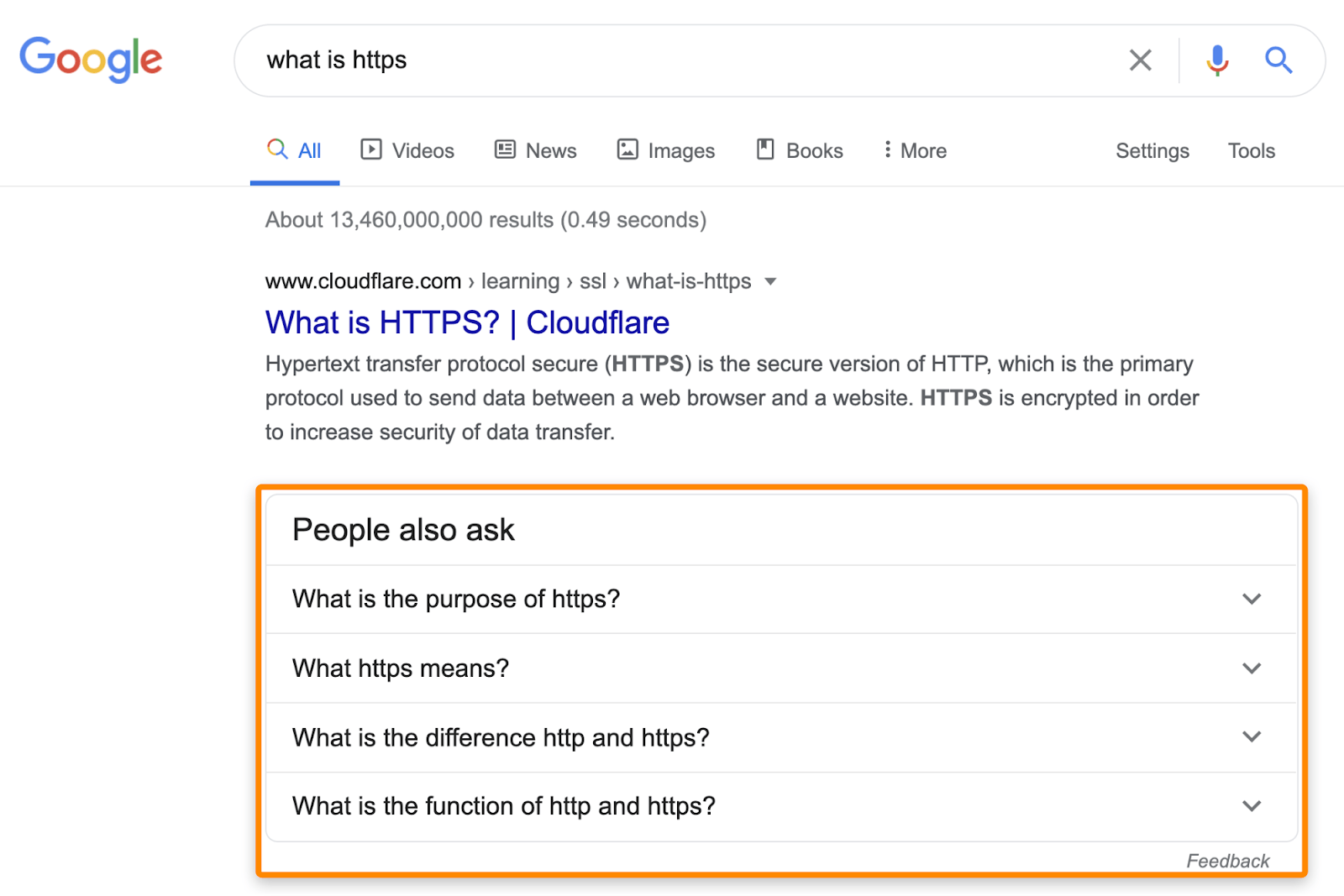
People want to know the purpose of HTTPS and the difference between HTTPS and HTTP. If you were writing a post about this topic, it would probably make sense to use the expanded definition format. You’d give the definition, then answer these questions under H2 subheadings.
This is precisely what we did in our blog post about HTTPS:

You can find more questions that people are asking about the topic with Ahrefs’ free Keyword Generator. Just type in the topic (e.g., “HTTPS”), hit search, then go to the Questions tab. This shows up to 50 questions containing your search term sorted by their monthly search volumes.
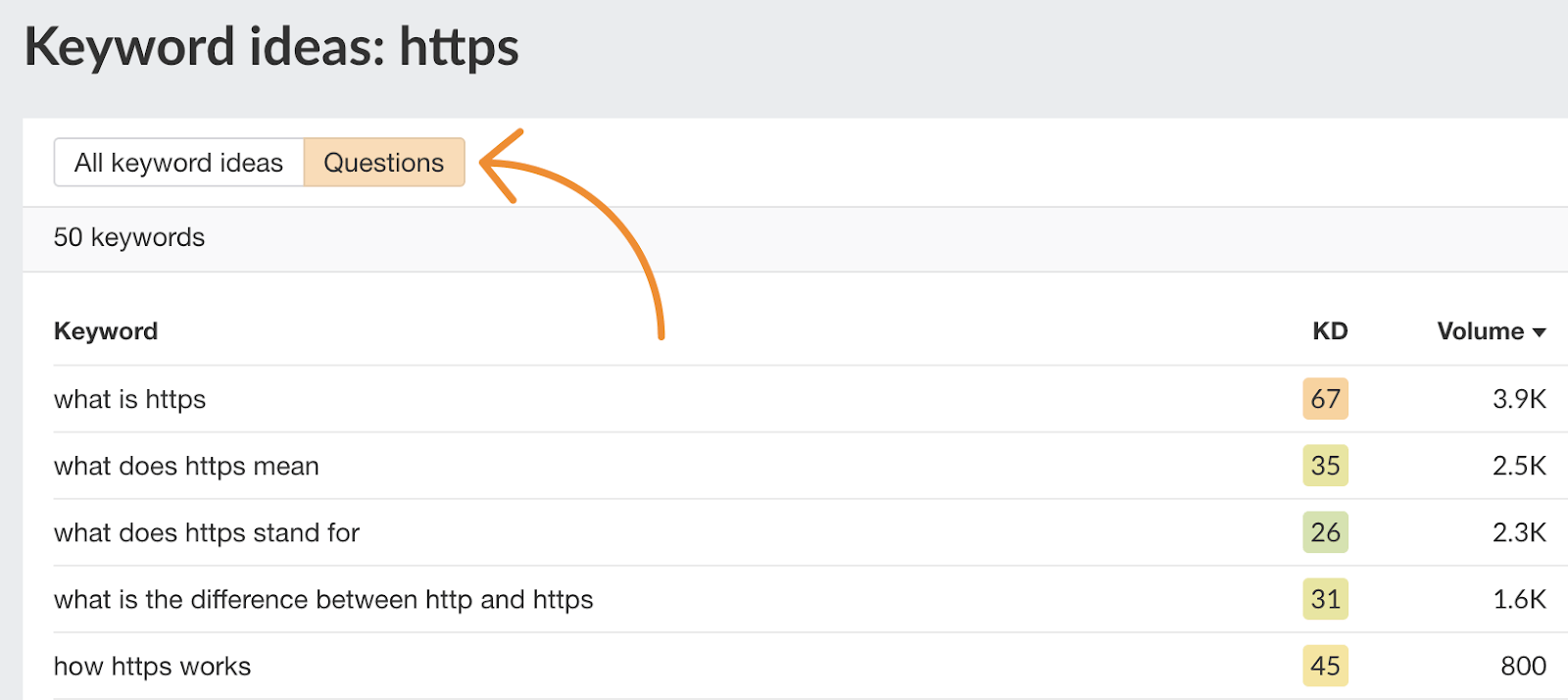
4. Conclude with a short summary
No need to overthink this. Just summarize the key learnings from the post, link to further resources on the topic, and you’re done.
A beginner’s guide is an educational resource that offers a comprehensive introduction to a topic. It should be written in a way that’s suitable for newbies.

Examples
What kind of content is this template best for?
If you’re planning to write more of an educational resource for beginners than an actionable, step-by-step guide, then the “beginners guide” format is probably the best choice.
For example, take our beginner’s guide to canonical tags. It explains what a canonical tag is, what they look like, why they’re important for SEO, best practices, how to construct one, how to avoid mistakes, and how to fix existing issues—everything a beginner could possibly need to know.

How to use this template
Follow these steps.
1. Create a title that appeals to beginners
The easiest way to do this is to use the words “for beginners” or similar in the title itself.
- [Topic] For Beginners
- The Beginner’s Guide to [Topic]
- The Noob-Friendly Guide to [Topic]
2. Write a simple and encouraging introduction
People who seek out beginners guides are precisely that: beginners. So while there isn’t a 1–2 punch formula, you need to make sure that it does four things:
- Reinforce why they need to know this. Most beginners guides are long. Unless you can convince people why they should spend time learning what you have to teach them, they might just call it a day.
- Use simple language. Put their mind at ease right off the bat. Let them know that your post isn’t packed with industry jargon and complex language.
- Encourage them. Explain that the topic isn’t that hard to grasp. Make them feel like they can understand this.
- Tell them what they’ll learn. A linked table of contents should do the trick.
Here’s an example from our beginner’s guide to hreflang tags:
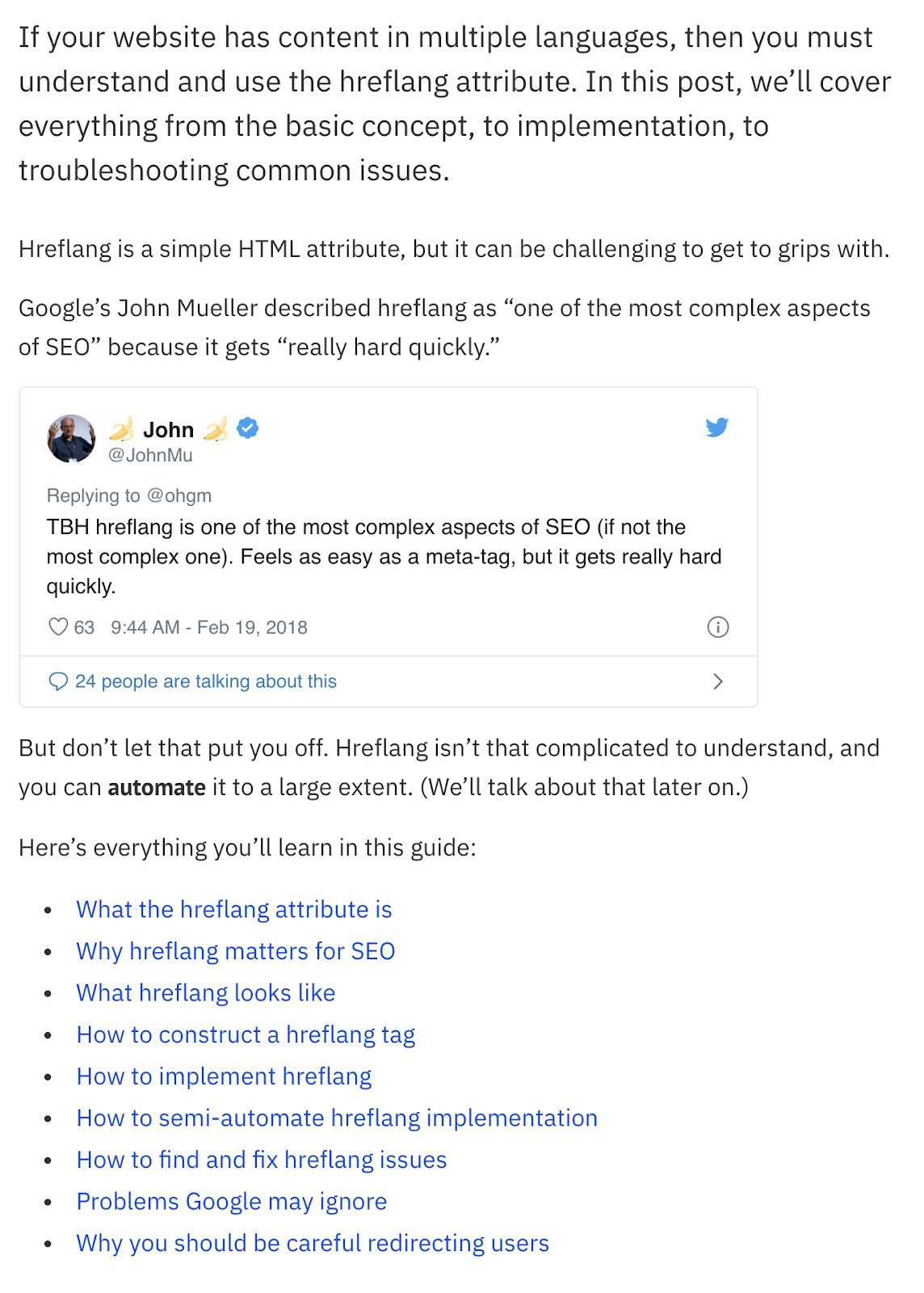
3. Go through everything they need to know
Think about the questions a beginner might have about the topic, and answer them. Use a H2 subheading for each question.
For example, here are the H2’s from our beginner’s guide to affiliate marketing:
- What is affiliate marketing?
- How does affiliate marketing work?
- How much money can I make as an affiliate marketer?
- How to get started with affiliate marketing
For questions that require long answers or multiple steps, use H3-H6 subheadings under each H2 to provide further hierarchy and make things easier to digest.
This is what we did for the “How to get started with affiliate marketing” section in our guide:
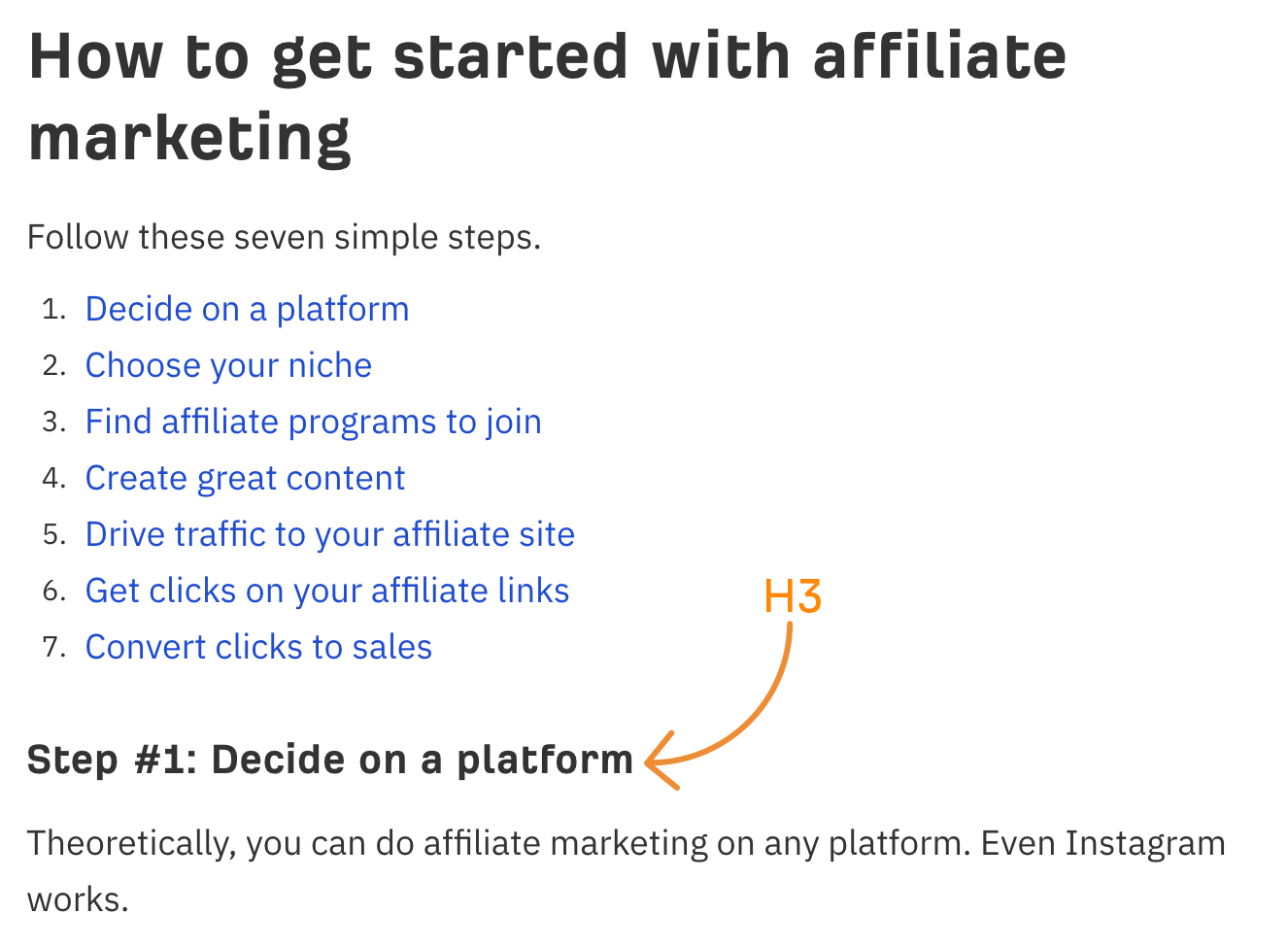
If you’re not sure what questions a beginner might want to know the answer to, look at Google’s People Also Ask (PAA) boxes or find popular questions using Ahrefs’ free Keyword Generator.

4. Conclude with encouragement and further resources
There are tons of ways to conclude beginners guides. However, we tend to end ours with some final encouragement and links to further reading.

Which blog post template should you use?
Each of these templates work best for a particular type of content. But the question is, what type of content should you create?
For example, say that you run a coffee blog. You’ve done your keyword research and found that “french press cold brew” is a low-difficulty keyword with thousands of monthly searches.
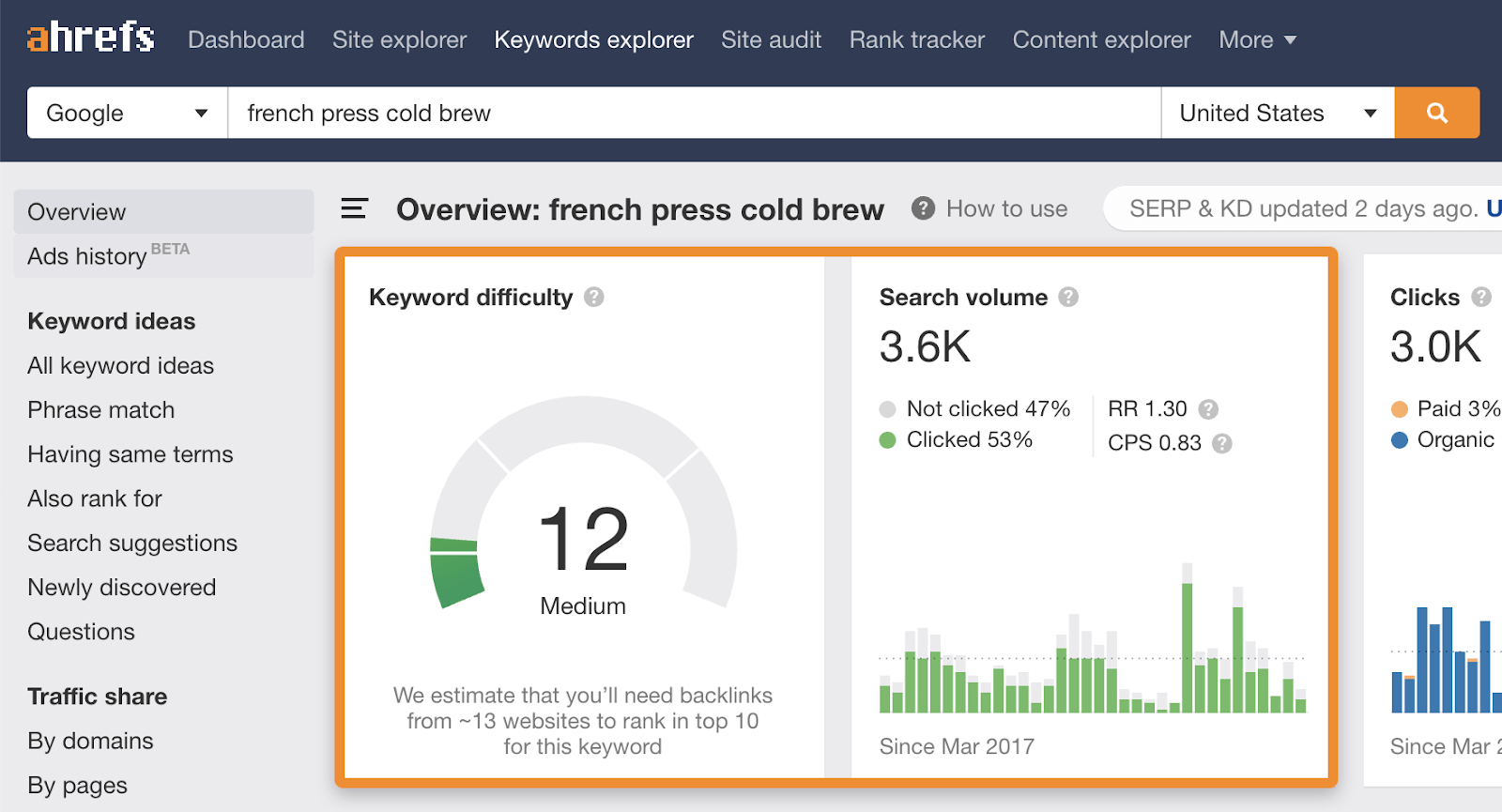
If you want to rank for this term, which of these should you write?
- 10 Tips for Making Cold Brew Coffee Using a French Press
- How to Brew Cold Brew Coffee In French Press
- What Is Cold Brew Coffee? Everything French Press Owners Need to Know
- The Beginner’s Guide to Making Cold Coffee (In A French Press)
- The Best French Press for Making Cold Brew Coffee (Top 10)
The best way to figure this out is to look at what currently ranks. Google works hard to rank the most useful results for searchers, so the top-ranking pages are a good proxy for search intent.
For example, if we look at the top-ranking pages for our target term in Keywords Explorer, we see that almost all of them are step-by-step guides.
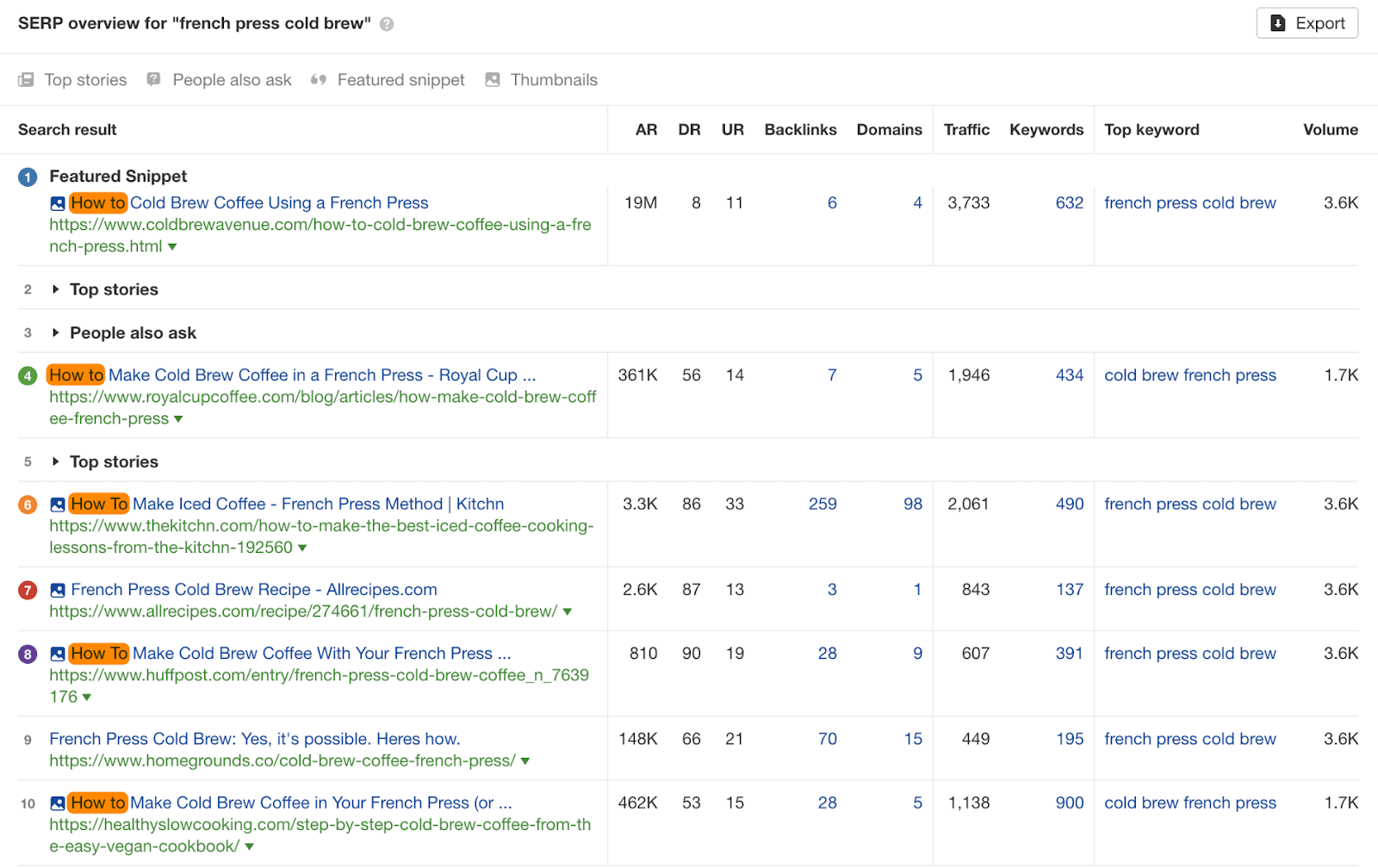
To stand the best chance of ranking for this keyword, we should follow suit.
Just know that search intent isn’t always clear cut. You’ll sometimes see a mix of formats in the results and will have to use your best judgment.
Final thoughts
Although these templates are a good starting point, know that they won’t work for every eventuality. It’s sometimes better to mix elements of one with another.
For example, take a look at our guide to creating SEO-friendly URLs. The first half of the post outlines a step-by-step process, whereas the second half lists best practices. In other words, the post is part step-by-step guide, and part listicle.
Don’t be afraid to mix things up where necessary.
Want more blogging tips? Read this.
Got questions? Ping me on Twitter.
